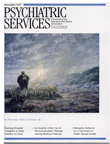Minefields in Their Hearts: The Mental Health of Children in War and Communal Violence
This is a good book that is hard to review because it is somewhat painful and complex. It deals with large numbers of children whose major mental scars and illnesses most of us most of the time avoid acknowledging and contemplating. Civilized and not so civilized citizens of the world often feel guilty but also helpless in the face of massive damage done to children by war and violence. If this book is taken seriously—as I hope it will be, for many years, by mental health clinicians; all physicians; trainees in psychiatry, psychology, social work, and nursing; politicians and statespeople; and parents, teachers, and others—it will make us significantly less helpless.
The book grew out of the psychoanalyst-editors' broad social-psychiatric interests, and out of years of activity by an International Working Group on Children in War and Communal Violence. That work group presumably provided the chance to find such well-trained and clear contributors with an astonishingly wide range of international experience.
Having had some limited experience myself with children and war, communal violence, and torture, I am rather awed by the wide frame of experience and reference that energized the authors. The book is not at all organized as reports on a series of field trips, but its excellent topic chapters are informed by direct information about many specific places and populations, for example, the Khmer Rouge, Cambodia, Nazi Germany, Argentina, Chile, Rwanda, Bosnia, Guatemala, Mozambique, Vietnam, Brazil, Ethiopia, Eritrea, Native Americans, Basques, Palestinians, Jews, Greece, South Africa, Chicago, New York, Washington, D.C., Afghanistan, and Kuwait.
The editors provide an excellent overview of content and context in their introductory first chapter. They further provide a useful page or so at the beginning of each subsequent chapter, introducing authors and commenting on subjects. These introductions are educated, sensible, and efficient. More editors should provide them. The relatively brief first chapter plus the introductions to the other chapters could usefully be assigned—for example, in psychiatric residency programs—both for their own sake and for their compelling invitation into a complex, and, in other circumstances, often forbidding, field.
The editors respect careful definitions of important words, and, like Erik Erikson, they respect well-chosen categories, which can give clarity, meaning, and usefulness to data. Child, war, communal violence, trauma, normal and abnormal development, resiliency, and interventions—these terms and categories sensibly help structure chapter 1.
The following chapter headings (some of which I have condensed a bit) also demonstrate good organizing choices: ethical issues (by Gillian Straker), what do we need to know to understand children in war and community violence? (James Garbarino and Karen Kostelny), posttraumatic stress disorder and other stress reactions (William Arroyo and Spencer Eth), refugee children (Joseph Westermeyer and Karen Wahmanholm), development and adaptation (Steven Marans, Miriam Berkman, and Donald Cohen), youth and violence: trends, principles, and programmatic interventions (Michael Greene), mobilizing communities to meet child needs (Neil Boothby), intergenerational transmission of trauma (Dan Bar-On), the care of caretakers (Yael Danieli), practical approaches to research (Peter Jensen), and assessing the impact of war on children (Mona Macksoud, Lawrence Aber, and Ilene Cohn).
I was particularly struck by some of the discussions of ethics, trauma, resilience, and possible interventions. At first, I missed prevention, but I fairly soon realized that this topic, though huge and relevant, is beyond the reasonable scope of such a book. Prevention is, in effect, up to all of us and our governments and our societies.
Minefields in Their Hearts seems to me not an easy but a wise and scientifically well-informed book. I hope and expect it to have a long life on many bookshelves, in many hands, and in many minds and hearts.
Dr. Hartmann teaches at Harvard Medical School and practices child, adolescent, and adult psychiatry in Cambridge, Massachusetts.



